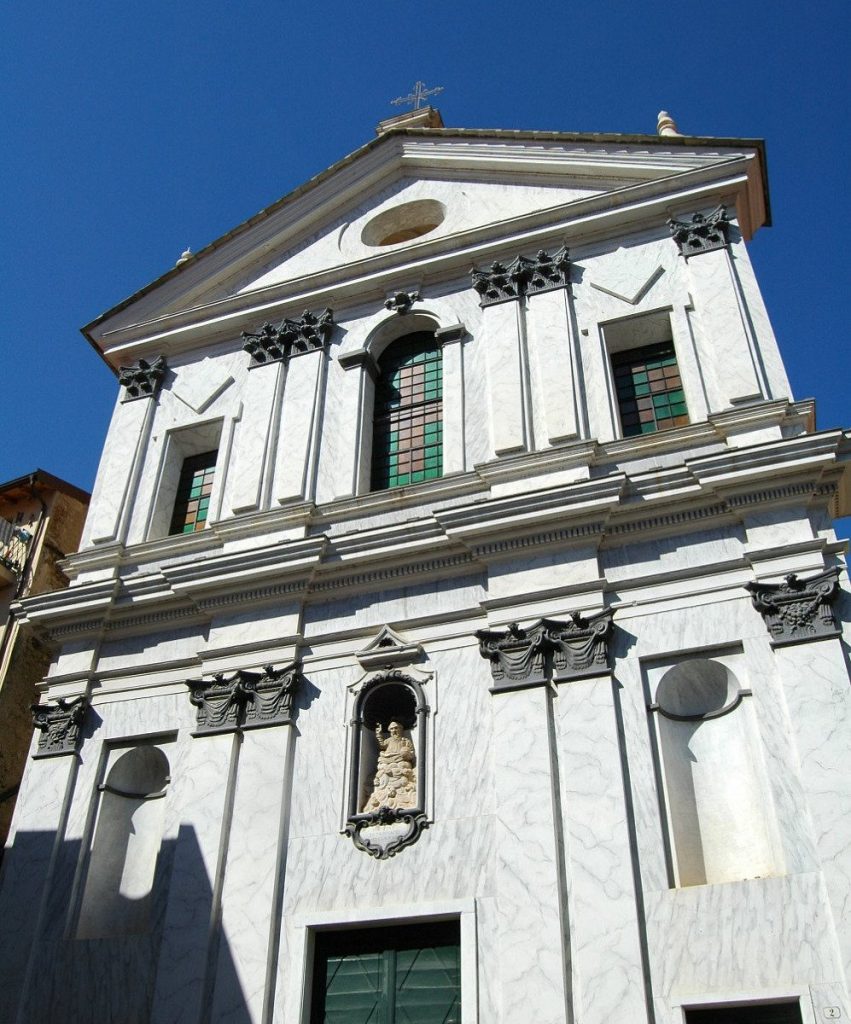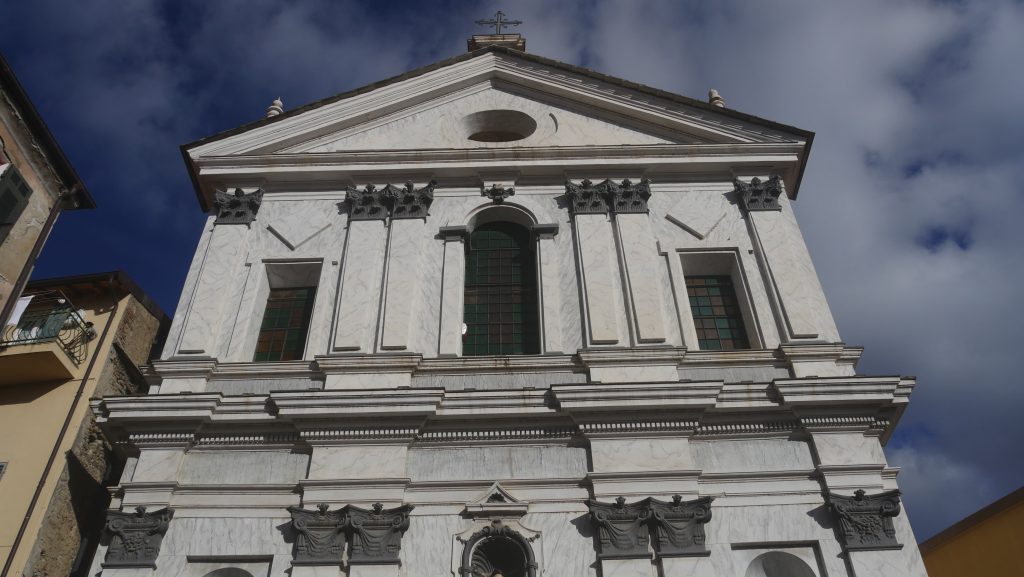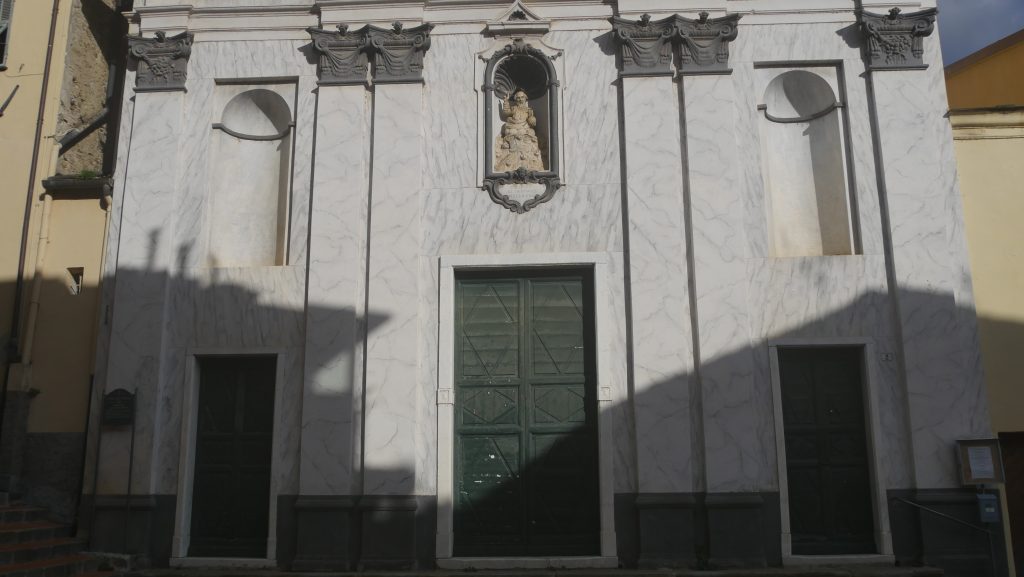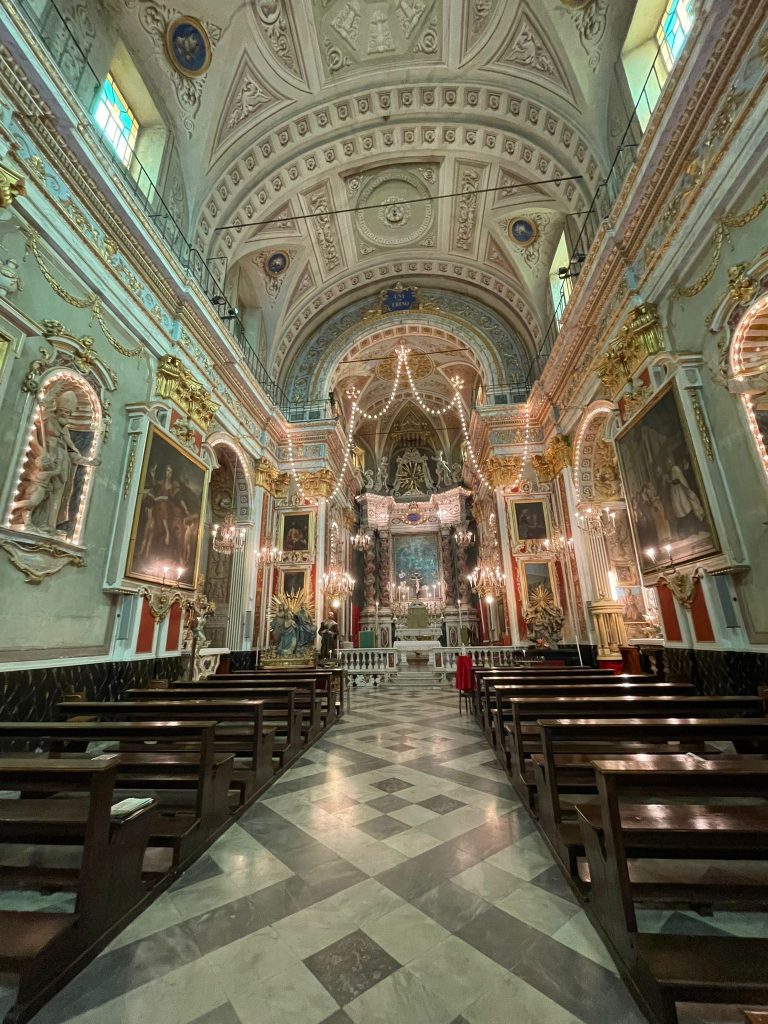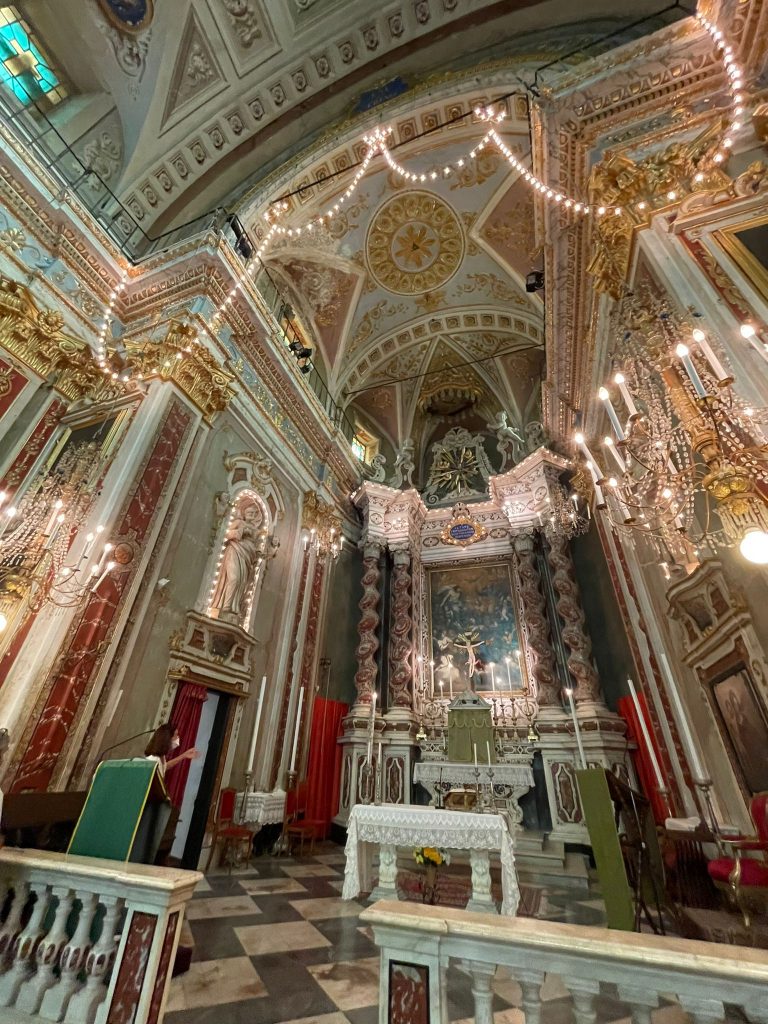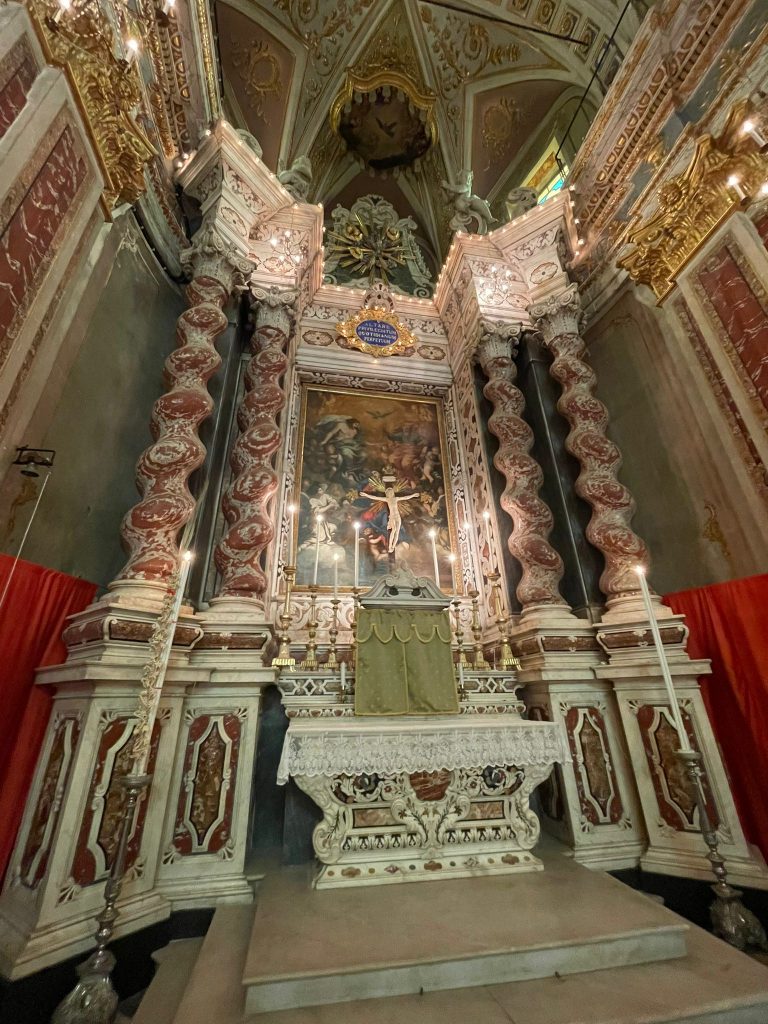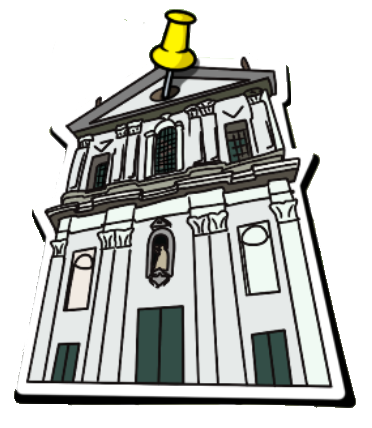
Oratorio della Santa Trinità
The brotherhood of Taggia dedicated to the Most Holy Trinity, and known as the “Reds”, dates to the second half of the sixteenth century. The brothers that dress in red were constantly engaged with helping the pilgrims and the sick, using a hospice and hospital system on top of the oratory dedicated to saint ’Orsola.
The sacred building has a remarkable stone access gate that overlooks the Most Holy Trinity’s square, with a facade with two orders, interposed with half pilasters that ends in capitals equipped with festoon, and at the apex, a regular tympanum, accompanied at their far end by raised pinnacles.
The interior is wide, with a single nave, with two lateral chapels placed right before the presbyterian area. The last one has a rectangular wide diagram with a barrel vault, suitable for more demanding celebrations.
The walls are punctuated by half pilasters that accompany a trabeation rich with plaster decoration, starting with the presbyterium.
This first ornamental phase is later enriched with a series of interventions gathered around the second half of the eighteenth century and the first half of the nineteenth century. For instance, the statues of San Giuseppe and San Domenico, made by Giuseppe Adami.
In the oratory’s majesty, surely one thing stands out: the pipe organ of nineteenth century fabrication. It’s located above a choir particularly abundant in decorative elements, with a triumph of painted musical instruments.
The organ can be included among those of average size; it is a Lombard production of the late nineteenth century, able to propose a result of a certain emphasis, suitable for a repertoire with melodramatic operatic implications.
For what concerns the decorative complex of the oratory, we are facing a fusion of sculptural and architectural elements, with pictorial presences, not related to a scheduled timing but linked to occasional will of various characters and factors.
There are numerous paintings that go with the architecture of the complex, but among many, the most interesting one because of its story and its painter is the “Il compianto sul Cristo Morto deposto dalla croce” (The pitied dead Christ deposed from the cross) from Salvatore Revelli. We can observe this big relief lunette close to the entrance, built-in on the right side of the nave.
The piece was finished in 1849 and delivered in 1851, and two molds were made from it: one for the Ligustic Academy of Genoa and the other for the Fine Arts Academy of Perugia. The piece in Taggia, made in 1844, is in fact the chalk prototype for the marmoreal original made for Turin.
The material used is chalk soaked with protein-based glue. The scene is animated and answers to the evangelic instructions: Christ is deposed in the sudarium, held up by Giuseppe d’Arimatea. San Giovanni Evangelist shows traits typical of funeral subjects, catched in a thoughtful weeping with his head held up by his left arm. At the centre, the Virgin is standing while painfully getting close to the dead son, accompanied by the Mary Magdalene and Maria di Cleofa.
This piece has been carefully studied during the restoration, and what was surprising was that it presented a chromatic level: the entire surface was covered with a white tint, with the intention of making the piece resemblant to a more official one made of marble. The Revelli’s model was probably colored in Taggia between 1865 and 1872, year in which the shade is certified at a critic level, probably also thanks to the brother of the author.
The Reds had been waiting in vain from Revelli a great marbled anchor with a trinity, a piece that was only imagined, to put it on the major altar.
Photos
Video






